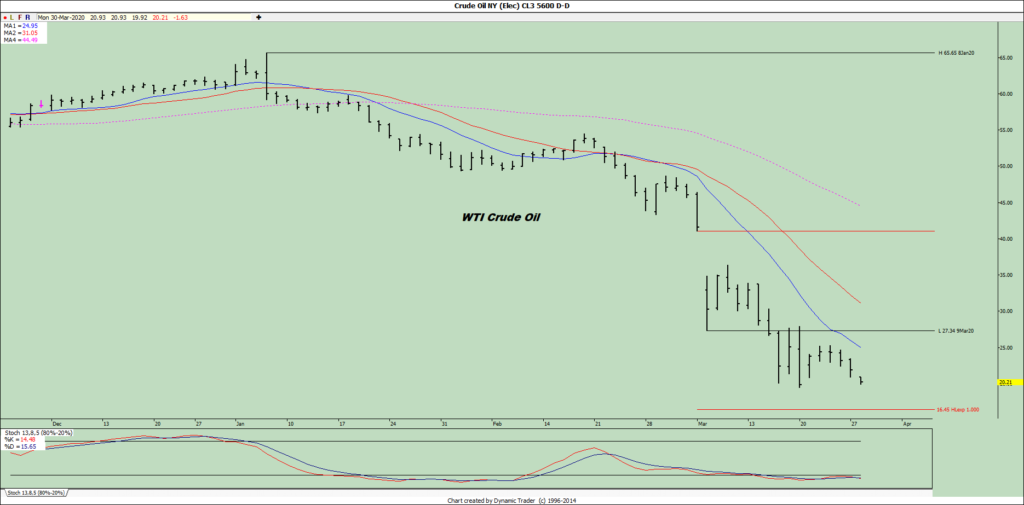Wheat and soy prices have begun this new week supported but ongoing concerns or disruptions related to the continuing global coronavirus pandemic. While this may be little more than rhetoric, on Friday, the Russian Ag Minister proposed a limit of 7 MMT of grain export for that nation between April and June of this year over food concerns. Now, any time an exporter, particularly the world’s largest wheat exporter, begins to cap the quantities it will allow to move out of its ports, it will raise concern, but keep in mind, 7 MMT is pretty much what they expected to export during that period anyway. So why the limit? It could be a message to calm the nerves of their citizens who may be concerned about food availability and inflation at home, and it could be a warning to foreign customers that they will not allow a run on their stocks if other nations begin to panic purchases. In either case, despite the recent strength, there are ample global stocks of wheat.
Beans also appear to be garnering support from Covid-19 related problems. In Argentina, the supply of beans moving into crushing facilities have fallen by half or more as transportation restrictions have kept trucks from moving beans to these plants. During the first week of March, just over 28,000 trucks carrying various ag commodities rolled into crush and port facilities in Rosario, and this week the number had dropped down to just over 13,000. There are no federally mandated restrictions, and in fact, that government has ordered municipal governments to allow traffic of commodities, but obviously, that has fallen on deaf ears thus far. In Brazil, trucks have no legal restrictions when it has come to moving commodities but have encountered problems with the shutdown of truck stops, filling stations, and diners. The government there has now deemed these types of businesses are “essential,” but problems do continue to exist. Bean harvest in Brazil is now estimated to be 77% complete.
As I said, the above factors appear to have provided support for the wheat and soy markets but have done little to change the plight of the corn market. This most apparent reason? Cheap crude oil. Two weeks ago as the April contract was expiring WTI futures traded below $20 a barrel, but snapped back above that level as the May contract took over. But in the overnight session, we pushed below that $20 mark again, making it the first time south of that level in a regular session since 2002. As we have covered previously, this market has been devastated by a trifecta of negative factors. The trade war, a price/production war between Saudi Arabia and Russia, and of course, the global pandemic slashing demand have all combined to bring us to these levels, and there is nothing to say we are done yet. Some of the world’s largest oil traders predict that if the demand does not improve, we could max out the global storage capacity within months. As would stand to reason, lower overall demand for fuel also means lower demand for bio-fuel, and with ethanol plants in full retreat, it does not bode well for corn demand. Of course, the industry that is probably being hit the hardest in all of this are the shale oil producers. It is my understanding that one of the unique issues with shale production compared with traditional oil drilling is the high decline rate. All wells reach peak production at some point, but with shale, that usually occurs in the first year, which means there needs to be a high replacement rate of new wells each year just to maintain production. For example, prior to the price collapse, there were 14,000 new wells projected for this year, of which 85% of the capacity would just replace the lost output of old wells. There is now discussion that we will only see around 5,000 new wells come online this year. I have read that the investment world is taking a dimmer and dimmer view towards future investment in this sector.
Seeing that we are just about ready to wrap up another month, let alone the first quarter for this year, and have USDA reports tomorrow, I do not imagine grain/soy prices will become carried away in either direction for now. Once again, here are pre-report trade estimates. For Prospective planting, the average trade estimate for corn acreage stands at 94.33 million, beans at 84.87 million, and wheat at 44.98. For the quarterly grain stock estimates, the average for corn stands at 8.125 billion bushels, 2.241 billion for beans, and 1.432 billion wheat.
